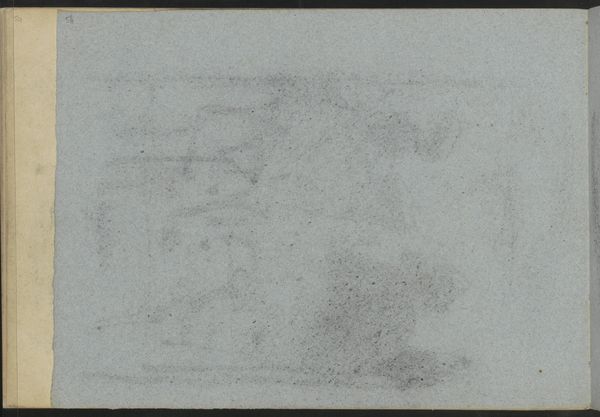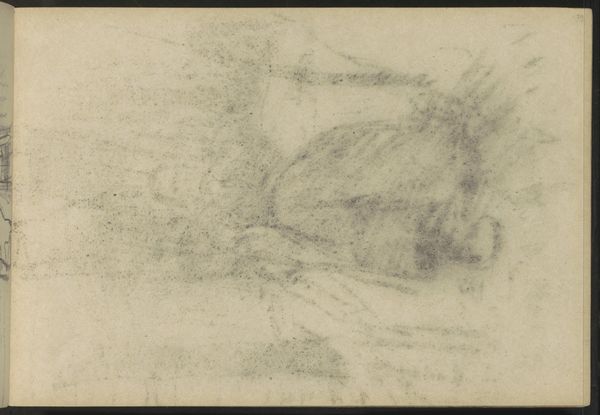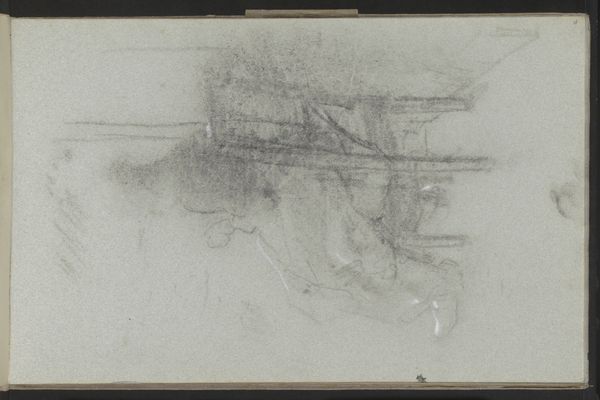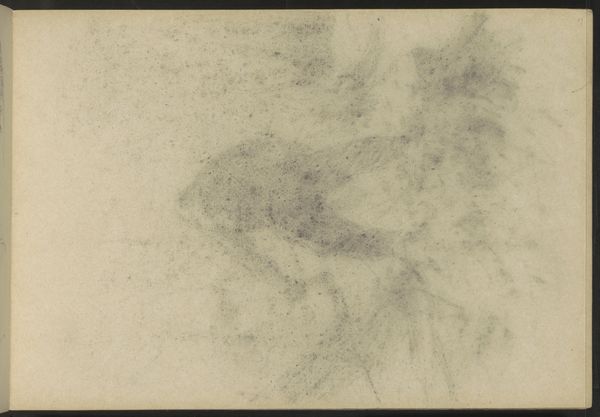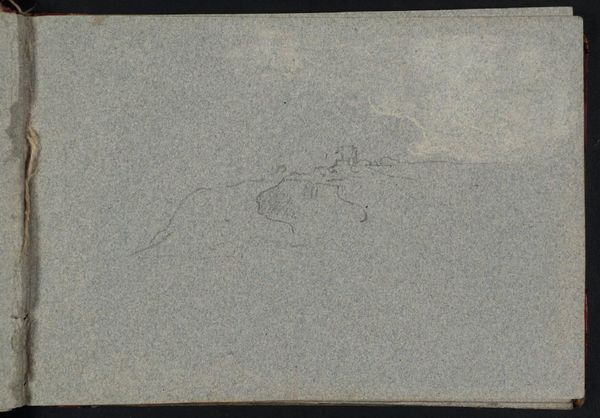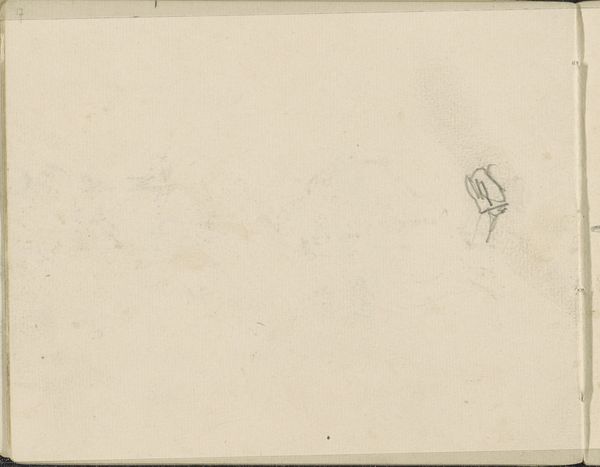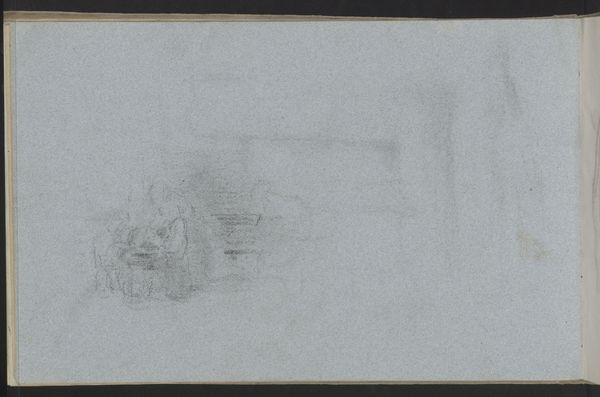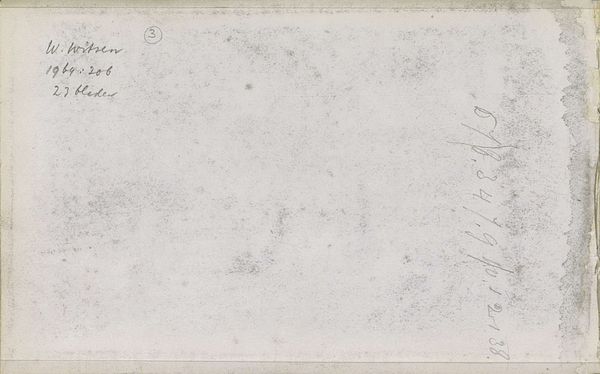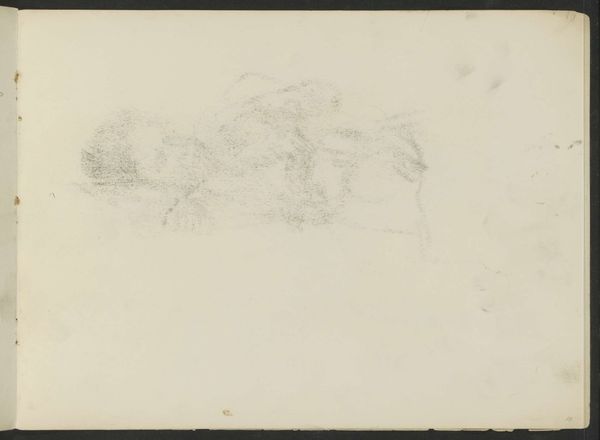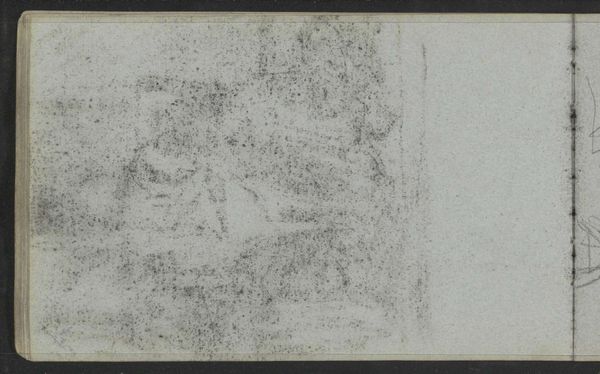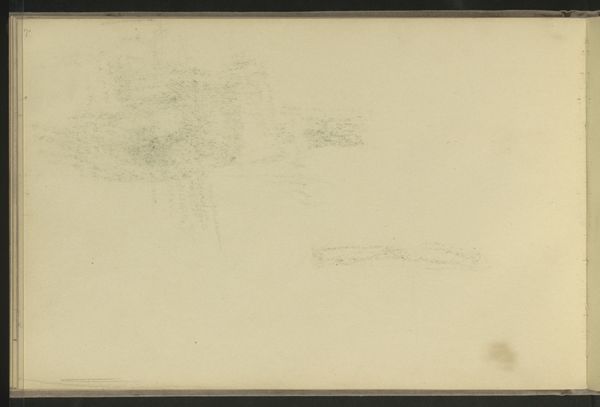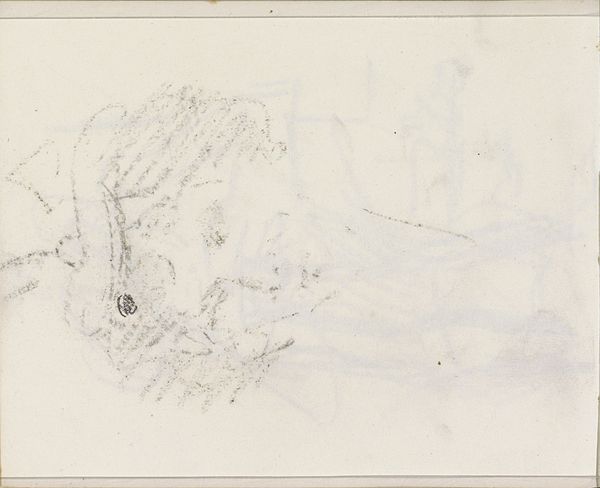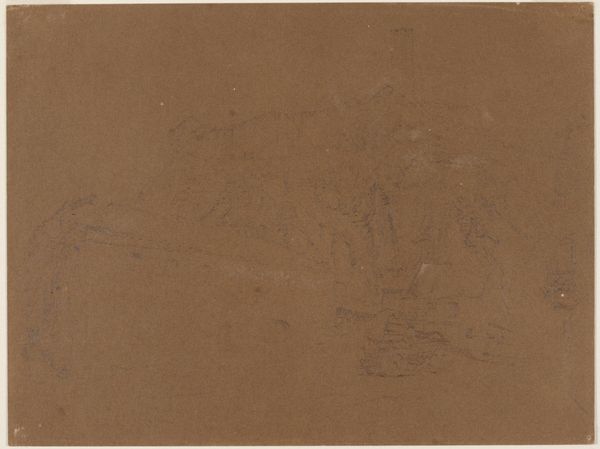
drawing, paper, graphite
#
drawing
#
impressionism
#
sketch book
#
landscape
#
paper
#
graphite
Copyright: Rijks Museum: Open Domain
Curator: Here at the Rijksmuseum, we have before us Willem Witsen's graphite drawing on paper titled "Abklatsch van de krijttekening op pagina 13," created around 1882-1884. Editor: My first impression is of a faded memory. It's ethereal, almost ghostly, with just a hint of form emerging from the haze. Curator: "Abklatsch" refers to a transfer print, a technique to reproduce the original chalk drawing in his sketchbook. He would apply pressure, transferring the graphite onto another page. It evokes a sense of fleeting moments captured in time. Witsen, known as a pivotal figure connecting the Amsterdam Impressionists, often experimented with methods of indirect observation. Editor: The landscape genre seems to blend with a focus on atmosphere. There's a clear horizontal emphasis, but the lack of distinct detail prompts consideration. We see the bare bones of a structure... and almost an intentional incompleteness. I wonder how his access to material affected that kind of raw artistic output, or did he favor these styles of abstraction because of artistic intent alone. Curator: Consider how landscape evolved, especially during a time of rapid urbanization. Even these soft applications, where shadow and light create structure, reflect something quite grounding to an Amsterdam Impressionist at this period. This specific process is one that lends itself to soft contrast. These could signify themes related to memory or transience. Editor: I think also we should think of access, and whether these ephemeral images should even be kept safe inside these museums when perhaps they are an accurate depiction of an atmosphere rather than an object itself. This seems relevant especially given Amsterdam and Holland's complicated history with their ecological footprint during the 1880s as they built industry on lands seized or water logged. Curator: True. His images hold echoes of Dutch maritime power struggles, with industrial and naval implications of shipping at that time, still subtly shaping perceptions of place and identity. Editor: Considering the image is a reflection or "transfer", one could look at it through the framework of displacement in that era. Whether it's the landscape transformed by Dutch ingenuity, or communities harmed by that same hand, the impressionist focus isn't as romantic as we can believe in face value, but a direct sign of those political problems at hand in that same time frame. Curator: Your focus shifts this transfer-print from mere practice to documentation of something else. Very intriguing. Editor: Exactly. Art mirrors societal shifts; it either preserves or resists certain cultural traditions, or both at the same time.
Comments
No comments
Be the first to comment and join the conversation on the ultimate creative platform.
